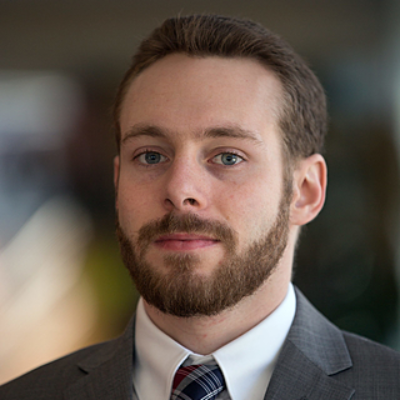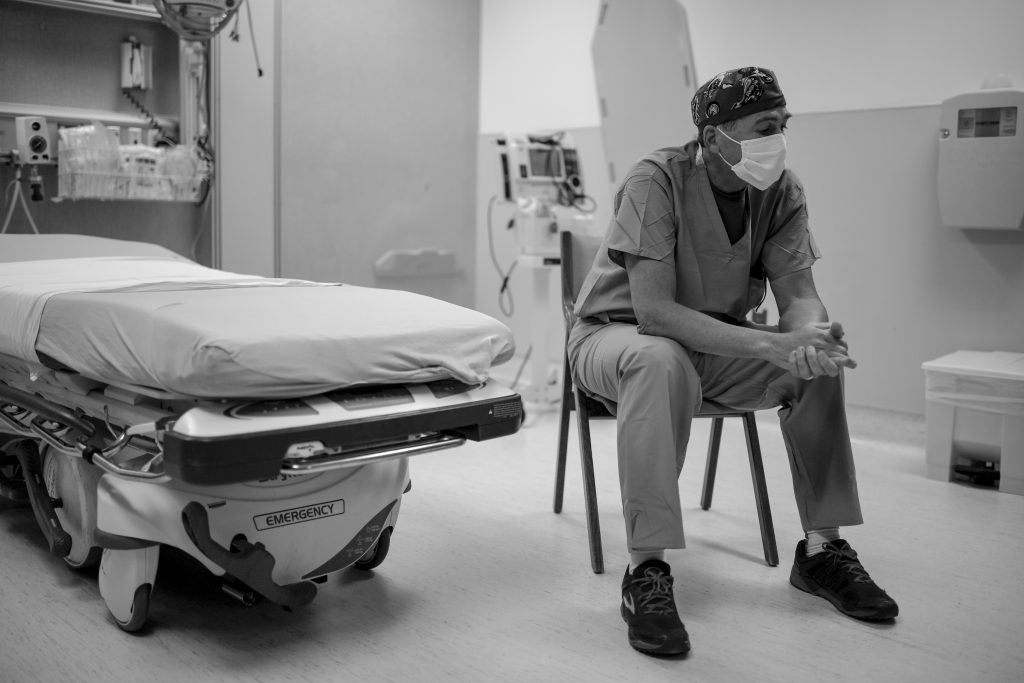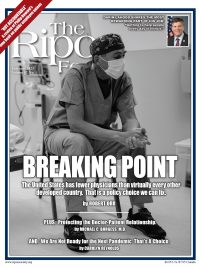
The United States has fewer physicians per capita than virtually every other developed country. At first glance, our lack of physicians is a puzzle.
The demand for doctors’ services is certainly there. Doctors are increasingly reporting being overworked and burned out at the same time that Americans are increasingly reporting supply-related barriers to accessing care. It’s also not because financial incentives are lacking either. American doctors remain exceptionally well compensated, both relative to other U.S. professions as well as compared to doctors in other countries.
All of this raises the question: why do we have so few doctors? The vast bulk of the blame here lies with the substantial bottlenecks in our training and education pipeline.
A System that is Uniquely Cumbersome
The difficulties here start with medical school. Apart from Canada, the United States is the only wealthy country requiring prospective doctors to earn a separate four-year bachelor’s degree prior to entering a four-year medical school. A single six-year medical degree is the norm in other countries.
Our more cumbersome approach to educating physicians was a response to the perceived backwardness of American medicine in the years following the Civil War. State-driven efforts to regularize medical practitioners around a scientific curriculum clashed with America’s laissez-faire attitude. This uneven practitioner quality posed a difficulty for philanthropists looking to emulate the medical advancements emerging out of Europe’s hospital-integrated research universities.
Doctors are increasingly reporting being overworked and burned out at the same time that Americans are increasingly reporting supply-related barriers to accessing care.
In attempting to import this model to America with the establishment of Johns Hopkins University, it was decided that medical school enrollment would be limited to those with a prior academic degree to compensate for the deficiencies of America’s practitioner workforce. In the decades that followed, Hopkins established itself as perhaps the most prestigious medical school in the country. With the 1911 Flexner Report’s designation of Hopkins as the model to conform to, the two-degree approach was copied along with the rest of the package, effectively rolling it out as the standard across the country.

While gatekeeping medical education behind a bachelor’s degree may have been a sensible response to the conditions of the time, it has increasingly become a liability. Having to spend eight years in school rather than six years means starting one’s medical career at an older age and having less time to spend before retirement age. Two additional years of school translates into two more years worth of tuition to pay. The vast majority of doctors emerge from medical school with an enormous debt burden, typically totaling about $200,000.
Given the American system’s clear negatives, nobody would argue this is the most efficient or effective way to educate physicians. Much of the course content in obtaining a four-year bachelor’s degree is irrelevant to medical practice. Indeed, even undergraduate coursework in subjects such as biology that are medically relevant would be better delivered as part of an integrated program.
It’s always hard to change long-established ways of doing things, even when they are clearly inadequate. But it’s particularly difficult to change when competition to get into medical school among Bachelor’s Degree holders remains as fierce as it is, heightened following restrictions on medical school enrollment during the 1980s.
The Misguided “Physician Surplus” Narrative
The problems stemming from our less efficient approach to educating doctors were compounded due to actions taken in response to an ill-conceived government report in the 1980s warning of an imminent “physician surplus.” Released in 1981, the Graduate Medical Education National Advisory Committee (GMENAC) report concluded that the United States was on the verge of a massive physician surplus, recommending immediate action to curtail both the domestic training of physicians as well as the admittance of those trained outside of the country.
In response to the report, medical schools established a 25-year voluntary moratorium on new schools. Similarly, in line with the GMENAC’s recommendations, medical schools either froze or cut student enrollment. Four years after the moratorium commenced, the number of medical graduates peaked and then began to decline modestly. Annual entrants to M.D.-granting schools fell in absolute terms from 16,600 in 1981 to a low of 15,800 in 1989. M.D. enrollment would not match its previous high until the moratorium ended in 2005.
While medical school enrollment is once again expanding, it remains far below what it would’ve been if pre-1980 enrollment growth trends had continued. And while foreign and Osteopathic graduates helped to soften the blow, we are still digging ourselves out of a physician shortfall that we engineered.
Our Misaligned Residency Financing
The other major legacy of the “physician surplus” was the gradual withdrawal of financial support for residency training. Following graduation from medical school, doctors spend at least three to seven years in residency training, depending upon which specialty they pursue.
Similar to medical school, undergoing residency training through an accredited program is essential to becoming a licensed physician. Unlike medical school, student loans are not available to finance this training. Instead, residencies are financed through a combination of labor contributed to the teaching hospital by the residents themselves as well as government support, the vast majority of which is provided through Medicare.
Apart from Canada, the United States is the only wealthy country requiring prospective doctors to earn a separate four-year bachelor’s degree prior to entering a four-year medical school.
This culminated in the freeze on Medicare-funded residency training slots enacted by Congress in 1997. The impact of this policy was not only to make it more difficult for new residency positions to break even from the teaching institution’s standpoint, but also to fix an uneven geographical distribution of funding for residency training across the United States. As the U.S. population has grown less concentrated in high-cost states of the Northeast, the mismatch between medical demand and where doctors are trained has increased.
On a per-person basis, New York receives six times more Medicare funding for residency training than Georgia despite training only three-and-a-half times as many residents. A geographically uniform funding structure would be both fairer and more cost-effective, allowing doctors to train in places with greater unmet demand.
Conclusion
With the benefit of hindsight, it’s clear that restricting physician supply harms patient access without controlling health care costs. The greatest casualty of these bottlenecks has been primary care. The mismatch between the demand for medical services and the supply of physicians capable of delivering them has resulted in the physician workforce we do have being overwhelmingly prioritized towards procedural care.
In order to redress past mistakes, the United States should pursue policies aimed at substantially boosting the number of physicians. Many highly capable young Americans would like to practice medicine. We simply have to let them. Achieving this would involve investing in the creation of additional medical schools, restructuring residency funding to better support the nation’s health needs, and experimenting with strategies to offer a streamlined medical degree pathway that’s more in line with the rest of the developed world.
Robert Orr is a social policy analyst for the Niskanen Center.




